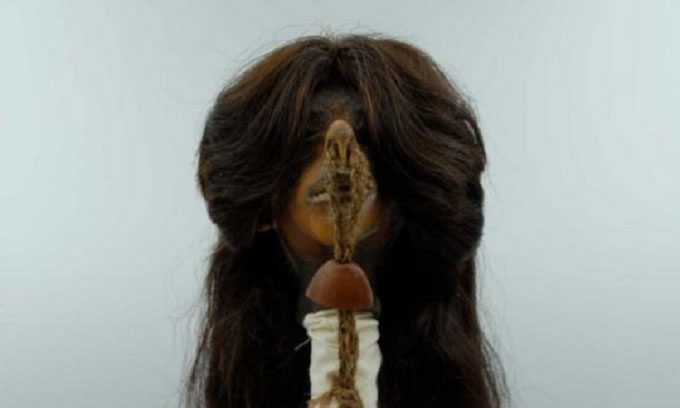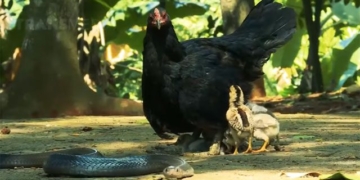Researchers Confirm That the Hundreds-Year-Old Shrunken Head Found in South America Is Real Human Remains Through CT Scans.
New computed tomography (CT) imaging results reveal that an 8.4 cm shrunken head, donated to a museum in Canada in the 1940s, is authentic and belonged to a female indigenous person from Peru. Researchers from Western University stated that they could observe hair follicles penetrating the epidermis, similar to hair follicles in the dermis. They published their findings on August 3 in the journal PLOS One.

Tsantsas displayed in the museum.
Shrunken skulls, also known as “tsantsas”, are a technique practiced by indigenous people in Ecuador and Peru until the mid-20th century. Researchers believe tsantsas contained the souls and knowledge of the deceased, thus potentially granting supernatural powers to their owners. However, some tsantsas are fraudulent, made from animal body parts or other materials commonly used in commercial replicas, making it difficult to distinguish authentic items. Commercial tsantsas often use animal skins, including those of pigs, monkeys, and sloths.
Using clinical computed tomography (CT) and high-resolution micro-CT methods, the research team was able to confirm that the tsantsa in the collection at the Chatham-Kent Museum in Chatham, Ontario, is indeed human remains. CT imaging produces two-dimensional “slices” of body parts, which are then compiled and layered to create three-dimensional images. The researchers are unsure of the exact age of the tsantsa at Chatham but estimate it to be several centuries old.
Typically crafted by men through a multi-step process, tsantsas are primarily made from the skin of enemy skulls killed in battle. This gruesome process involves making an incision at the back of the head, removing the skin and hair from the skull, and immersing it in hot water and sand. Scientists speculate that tsantsas were first created as early as the 16th century to retain the soul within the body, as the eyes and mouth were sewn shut. By shrinking the heads of their enemies, indigenous people believed that the victors would control their souls and prevent revenge.
Tsantsas were used in sacrificial rituals aimed at transferring the power of the shrunken head to the owner. However, the arrival of Europeans in the 19th century increased the commercial value of tsantsas. Due to curiosity, the demand for tsantsas exceeded supply, leading to a market for fakes.
Initial records of the tsantsa in Chatham were insufficient to determine if it was real or fake. However, the research team knew they were examining genuine human remains when they inspected the eyes, ears, and hair using high-resolution micro-CT imaging. The stitches used to close the incisions, as well as the eyes and mouth, could only be thoroughly examined using micro-CT methods.
Nonetheless, the research team could not ascertain whether the purpose of the shrunken head was for ritual use or for sale. Analyzing the material used to sew the eyes and mouth could reveal more information. If the material is vine-like, it is more likely that the head was used for ritual purposes. However, if it is made of cheap, modern thread, it would indicate a commercial purpose.




















































